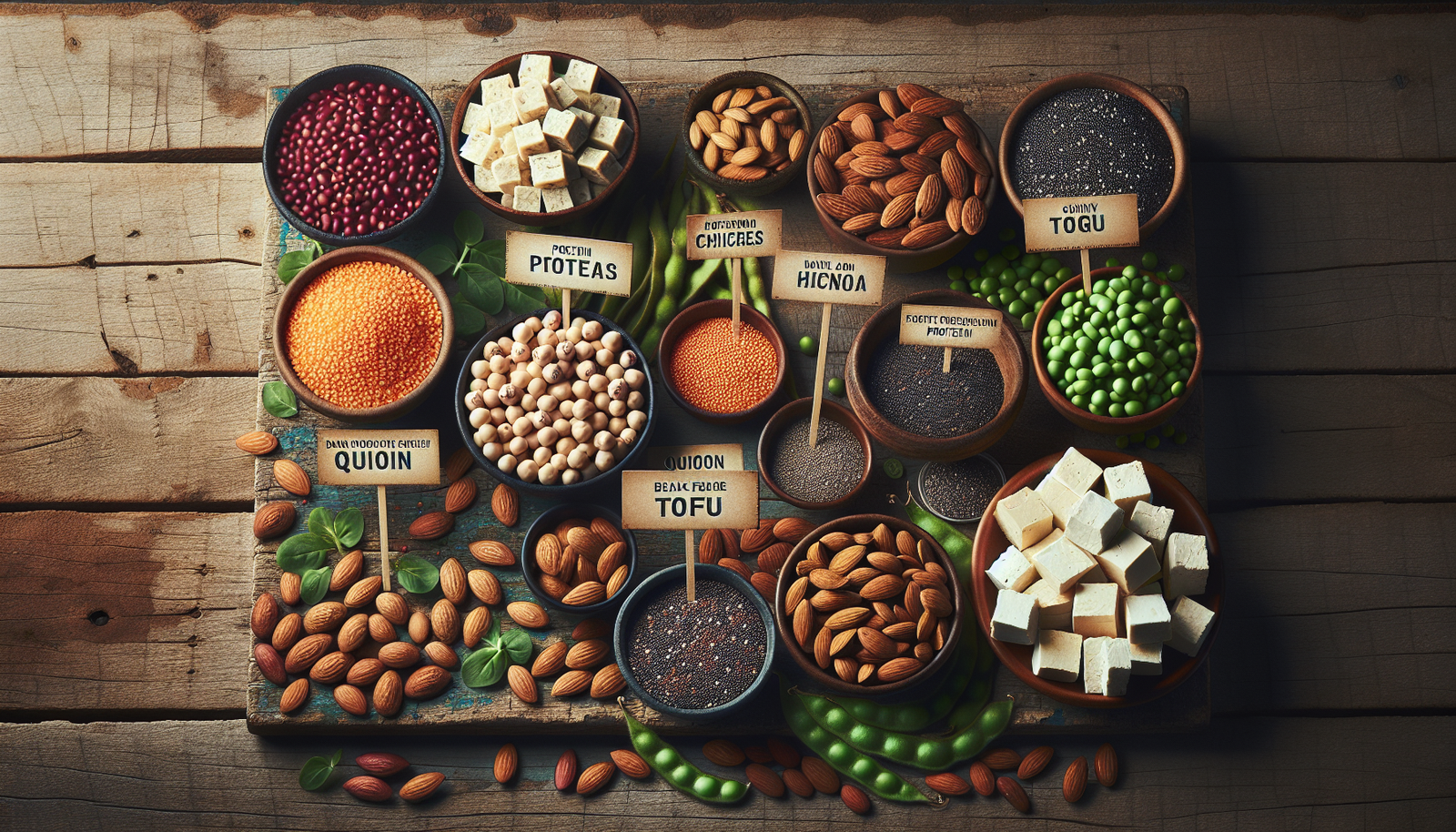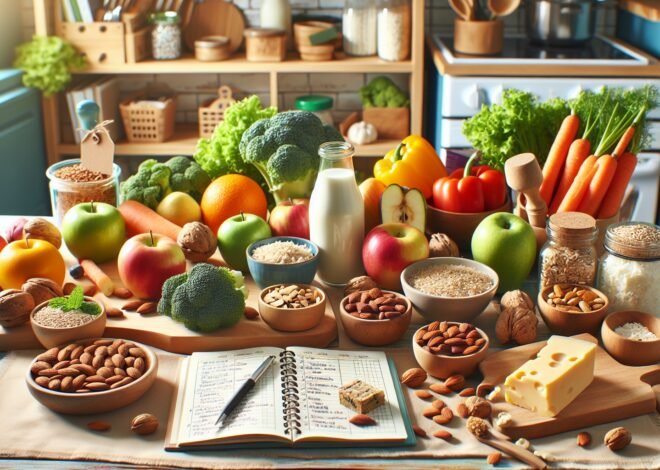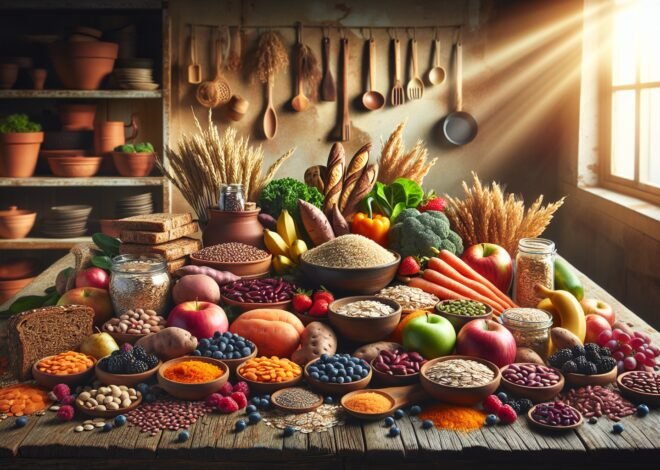
Best Plant-Based Sources of Protein for a Dairy-Free Diet
Plant-based protein for dairy-free diets offers a variety of nutritional benefits, catering to those who are lactose intolerant or looking to reduce animal products. Did you know that lentils contain more protein per cup than yogurt? This article explores the best sources of plant-based protein that can replace dairy, such as chickpeas, quinoa, and tofu. With the rise of vegan and dairy-free lifestyles, it’s crucial to find fulfilling and nourishing alternatives. Dive into this guide to discover protein-rich foods that help maintain a balanced diet without relying on dairy products.
Top Plant-Based Protein Sources for a Dairy-Free Diet
Transitioning to a dairy-free lifestyle doesn’t mean sacrificing protein intake. Plant-based proteins offer a wealth of options that are both nutritious and satisfying. From legumes to whole grains, these sources provide essential amino acids and nutrients to support your body’s needs. Let’s explore some top plant-based protein sources that can easily fit into your daily diet.
Legumes: A Powerhouse of Proteins and Nutrients
Legumes are an excellent source of plant-based proteins. They include beans, lentils, chickpeas, and peas. These staples are rich in fiber, which aids digestion and promotes a feeling of fullness. Moreover, legumes are packed with essential nutrients like iron, zinc, and B-vitamins. Incorporating legumes into your diet can help meet your protein requirements while offering a variety of delicious possibilities.
- Chickpeas: Versatile and nutty, perfect for salads, soups, and hummus.
- Lentils: Great in stews, curries, and salads, providing a hearty texture.
- Black beans: Ideal for tacos, burritos, and veggie burgers.
Try adding lentil soup or a chickpea salad to your weekly meal plan for a protein boost.
Nuts and Seeds: High-Quality Protein Sources
Nuts and seeds are not only rich in protein but also healthy fats and vitamins. They are perfect for those seeking a nutrient-dense snack or meal addition. Almonds, walnuts, flaxseeds, and chia seeds are some popular and accessible choices. These nutrient powerhouses contribute to heart health, brain function, and inflammation reduction.
- Almonds: Enjoy them raw, roasted, or as almond butter.
- Chia seeds: Perfect for smoothies, puddings, or sprinkled over oatmeal.
- Sunflower seeds: A crunchy topping for salads and soups.
Incorporate a handful of nuts or seeds into your meals for a protein-rich, satisfying addition.
Whole Grains: The Overlooked Protein Providers
Whole grains are often underestimated as protein sources, yet they provide both protein and complex carbohydrates. Options like quinoa, farro, and brown rice are not only filling but also packed with essential nutrients such as magnesium and B-vitamins. Whole grains are perfect for those looking to maintain steady energy levels throughout the day.
- Quinoa: A complete protein, ideal for salads, bowls, and as a rice substitute.
- Farro: Offers a nutty flavor perfect for soups and grain bowls.
- Oats: A breakfast staple that can be enjoyed as oatmeal or in overnight oats.
Consider swapping white rice for quinoa or adding farro to your soup for an extra protein punch.
Incorporating Plant-Based Protein into Your Meal Plans
Incorporating plant-based proteins into your meal plan can be both exciting and delicious. With a variety of options available, you can create nutrient-packed meals that keep you energized and satisfied. Whether you’re planning for a busy weekday or seeking a quick snack, there’s a plant-based protein option for every occasion.
Creative Vegan Meal Ideas for Busy Weekdays
Finding time to prepare healthy meals during a hectic week can be challenging. However, with a bit of creativity, you can whip up delicious vegan dishes that are both time-efficient and packed with nutrients. Consider preparing dishes like chickpea stir-fry, lentil tacos, or quinoa salad bowls. These meals are easy to prepare, requiring minimal ingredients while offering maximum flavor.
- Chickpea Stir-Fry: Sauté chickpeas with vegetables and your favorite spices.
- Lentil Tacos: Use seasoned lentils as a filling with your choice of toppings.
- Quinoa Salad Bowls: Mix quinoa with fresh veggies and a lemon-tahini dressing.
These meals can be prepped in advance, allowing you to enjoy nutritious meals even on the busiest days.
Nutrient-Dense Plant-Based Breakfast Options
Starting your day with a nutrient-dense breakfast sets the tone for sustained energy and focus. Plant-based options like avocado toast with seeds, smoothie bowls, and chia pudding are excellent choices. These options are not only rich in protein but also in vitamins and minerals that aid in overall health and vitality.
- Avocado Toast: Top with hemp seeds and a sprinkle of nutritional yeast.
- Smoothie Bowls: Blend your favorite fruits with protein powder and top with nuts.
- Chia Pudding: Mix chia seeds with almond milk and let it sit overnight for an easy grab-and-go option.
Experiment with these breakfast ideas to find your perfect morning fuel.
Dairy-Free Protein Snacks on the Go
Finding protein-rich snacks on the go can be a breeze with the right choices. Consider options like trail mix with nuts and seeds, energy bars made with dates and nuts, or roasted chickpeas. These snacks are portable, easy to make, and provide a quick protein boost to keep you energized throughout the day.
- Trail Mix: Combine almonds, walnuts, and dried fruit for a sweet and savory snack.
- Energy Bars: Make your own with oats, dates, and your choice of nuts.
- Roasted Chickpeas: Season chickpeas with spices and roast for a crunchy snack.
Keep these snacks handy for a nutritious and satisfying boost whenever you need it.
Maximizing Nutrient Absorption in a Dairy-Free Diet
Ensuring optimal nutrient absorption in a dairy-free diet is crucial for maintaining health and vitality. By understanding the role of vitamins and minerals in protein synthesis, and using complementary proteins, you can achieve a balanced and effective diet. Additionally, exploring cooking methods that enhance nutrient availability can further support your nutritional goals.
The Role of Vitamins and Minerals for Protein Synthesis
Vitamins and minerals are vital in supporting protein synthesis and overall health. Key nutrients such as vitamin B12, vitamin D, iron, and zinc play significant roles. Vitamin B12, often found in animal products, can also be sourced from fortified foods or supplements. Vitamin D aids in calcium absorption and bone health, while iron is crucial for oxygen transport in the blood.
- Vitamin B12: Look for fortified cereals or consider a supplement.
- Vitamin D: Spend time in sunlight or consume fortified plant milks.
- Iron: Include lentils, spinach, and tofu in your diet.
Focus on incorporating these essential nutrients to support your protein intake and overall well-being.
Complementary Proteins: Achieving a Balanced Amino Acid Profile
Achieving a balanced amino acid profile is essential for a plant-based diet. Complementary proteins involve combining different plant foods to obtain all essential amino acids. Pair beans with rice, or hummus with whole-grain bread, for a complete protein profile. These combinations ensure your body receives all the necessary amino acids for optimal function.
- Beans and Rice: A classic combination providing all essential amino acids.
- Hummus and Whole-Grain Bread: A delicious and complete protein-rich meal.
- Peanut Butter with Whole-Grain Bread: Simple yet effective in achieving a balanced profile.
Experiment with these pairings to enhance your diet and ensure you receive complete proteins.
Cooking Methods to Enhance Nutrient Availability
Cooking methods can significantly impact the nutritional value of your meals. Methods like steaming, sautéing, and grilling help retain nutrients within foods. Fermenting foods like tempeh can also improve nutrient absorption and enhance flavors. By choosing the right cooking techniques, you can maximize the nutritional benefits of your dairy-free, plant-based meals.
- Steaming: Retains vitamins and minerals in vegetables.
- Sautéing: Enhances flavors while preserving nutrients.
- Grilling: Provides a smoky flavor and maintains nutrient integrity.
Explore these cooking methods to ensure your meals are both delicious and nutrient-rich.
Conclusion
Plant-based proteins are increasingly popular for people following dairy-free diets. They offer nutritional benefits similar to those of animal-based proteins without the lactose content. Common sources include soy, almond, oat, pea, and coconut. These proteins are often fortified to include calcium and vitamin D to replace nutrients usually found in dairy. They provide suitable alternatives for those with lactose intolerance or vegan lifestyles.
FAQ
What are the best sources of plant-based protein for dairy-free diets?
Top sources include lentils, chickpeas, quinoa, tofu, tempeh, and edamame. These foods offer essential amino acids and can easily replace dairy-based proteins.
How can I meet my protein needs on a dairy-free plant-based diet?
Combine different protein-rich plant foods throughout the day. For instance, pair beans with whole grains, or add nuts and seeds to meals to boost protein intake.
Are plant-based proteins sufficient for a balanced dairy-free diet?
Yes, plant-based proteins can provide all necessary nutrients. Variety is key, so mix and match different sources to ensure a well-rounded diet.
Can plant-based protein supplements replace dairy in my diet?
They can help fill gaps, especially for those with higher protein needs. Opt for options like pea or rice protein powder, but remember to focus on whole foods too.
What are the top benefits of using plant-based protein in dairy-free diets?
Plant proteins are often lower in calories and saturated fats. They also provide fiber and are linked to reduced risks of heart disease and certain cancers.
How do I incorporate more plant-based protein into my dairy-free meal plan?
Add legumes to soups and salads, use quinoa or buckwheat instead of rice, and snack on nuts or seed butters. Smoothies with leafy greens and a scoop of plant protein powder can also boost daily intake.











